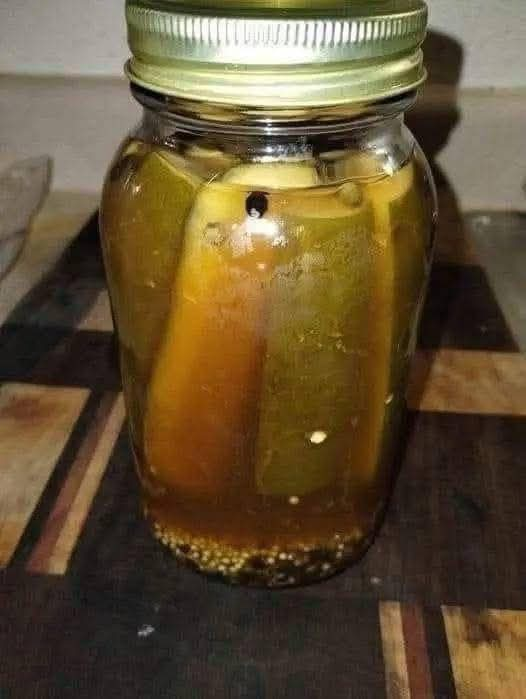Homemade Pickles in a Mason Jar: Crunchy, Tangy, and Timeless
Pickles are one of the world’s most beloved condiments. Whether enjoyed on a burger, eaten straight from the jar, or served alongside a sandwich, their tangy crunch adds brightness to any meal. For centuries, pickling has preserved cucumbers and other vegetables, blending practicality with delicious flavor. Making homemade pickles is one of the most satisfying kitchen projects. With just a few ingredients—cucumbers, vinegar, water, salt, and spices—you can craft pickles that are fresher, crisper, and more flavorful than store-bought ones. Stored in mason jars, they not only look charming but also connect you to a long tradition of home preserving. In this complete guide, you’ll learn the history of pickling, step-by-step recipes, flavor variations, health benefits, serving ideas, and tips to keep your pickles crunchy and flavorful.
The History of Pickling
Pickling is one of the oldest food preservation techniques, dating back over 4,000 years. It originated in India and Mesopotamia, where cucumbers were first preserved in brine. Ancient Egyptians, Greeks, and Romans valued pickles for their flavor and extended shelf life. In Europe, pickling became vital during winter when fresh produce was scarce. Colonists later brought the practice to the Americas, where pickles became a household staple. Today, from Polish dill pickles to Japanese tsukemono and Korean kimchi, every culture has its own unique take on pickling.
Ingredients for Homemade Pickles
The perfect pickle starts with the right ingredients. You’ll need:
- Cucumbers: Choose small, firm pickling cucumbers.
- Vinegar: White, apple cider, or rice vinegar for tangy acidity.
- Water: To dilute the vinegar.
- Salt: Non-iodized kosher or pickling salt prevents cloudiness.
- Sugar: Optional, for balanced sweetness.
- Spices: Dill seeds, mustard seeds, peppercorns, coriander, garlic, or chili flakes.
Optional add-ins include onions, jalapeños, or herbs like fresh dill for added flavor and aroma.
Step-by-Step Recipe for Classic Dill Pickles
Ingredients:
6–7 small cucumbers (cut into spears), 2 cups water, 2 cups white vinegar, 2 tablespoons kosher salt, 1 tablespoon sugar (optional), 4 garlic cloves, 2 teaspoons mustard seeds, 1 teaspoon black peppercorns, and a handful of fresh dill sprigs.
Instructions:
- Sterilize the jars: Wash mason jars and lids in hot, soapy water, then rinse well.
- Prepare the cucumbers: Wash thoroughly and cut into spears or slices.
- Make the brine: Combine water, vinegar, salt, and sugar in a pot. Bring to a boil, stirring until dissolved.
- Pack the jars: Layer cucumbers, garlic, dill, mustard seeds, and peppercorns in the jars.
- Add the brine: Pour the hot brine over the cucumbers, leaving ½ inch of headspace.
- Seal and cool: Wipe rims clean, apply lids tightly, and let cool at room temperature. Refrigerate once cooled.
Pickles are ready in 24 hours but reach full flavor after 3–4 days.
Tips for Crunchy Pickles
Use the freshest cucumbers possible—they should be firm and cold. Never skip the salt; it draws out moisture and enhances crunch. Keep cucumbers fully submerged in the brine to prevent spoilage. Cool jars quickly and refrigerate immediately. For extra crispness, add grape leaves—the tannins help preserve crunchiness naturally.
Popular Pickle Variations
- Bread-and-Butter Pickles: Sweet and tangy with onion slices.
- Spicy Pickles: Add red pepper flakes or jalapeños for heat.
- Garlic Dill Pickles: Extra garlic for bold flavor.
- Sweet Gherkins: Tiny cucumbers in a sweet brine.
- Fermented Pickles: Made without vinegar, using salt brine for a probiotic boost.
Health Benefits of Pickles
Pickles offer more than flavor—they can also benefit your health. They’re low in calories, rich in electrolytes, and hydrating due to their brine. Fermented pickles promote gut health through probiotics. Cucumbers and dill provide small amounts of vitamin C and antioxidants. However, they can be high in sodium, so moderation is key.
Serving Ideas
Pickles are incredibly versatile. Serve them with burgers, sandwiches, or barbecue for tangy contrast. Dice them into potato salad, tuna salad, or egg salad for extra zest. Include them on cheese boards, or enjoy them straight from the jar. Even the pickle juice can be reused as a salad dressing base, marinade, or cocktail ingredient in drinks like Bloody Marys.
Storage and Shelf Life
Refrigerator pickles last 1–2 months when kept cold. Fermented pickles can last for several months if submerged in brine. Properly canned pickles, sealed in a water bath, can stay shelf-stable for up to a year. Always discard pickles that smell off, show mold, or lose their crunch completely.
Cultural Significance of Pickles
Pickles hold a global presence—from Polish and Jewish delis famous for their kosher dills to Korean kimchi, Japanese tsukemono, and Middle Eastern pickled vegetables. Every region embraces pickling as both preservation and art, uniting cultures through tangy, flavorful tradition.
Why Homemade Pickles Are Worth It
Making pickles at home connects you to a timeless culinary tradition while giving you full control over flavor, texture, and spice level. It’s cost-effective, satisfying, and a creative way to personalize your pantry. Plus, homemade pickles make thoughtful gifts for family and friends.
Final Thoughts
Homemade pickles in a mason jar are more than just a condiment—they’re a celebration of flavor and tradition. With a handful of ingredients and a little patience, you can create tangy, crunchy pickles that taste better than anything store-bought. Whether sweet, spicy, or classic dill, every batch tells a story of freshness and care. So next time you find crisp cucumbers at the market, grab a few jars and start your own pickling adventure—one crunchy bite at a time.
